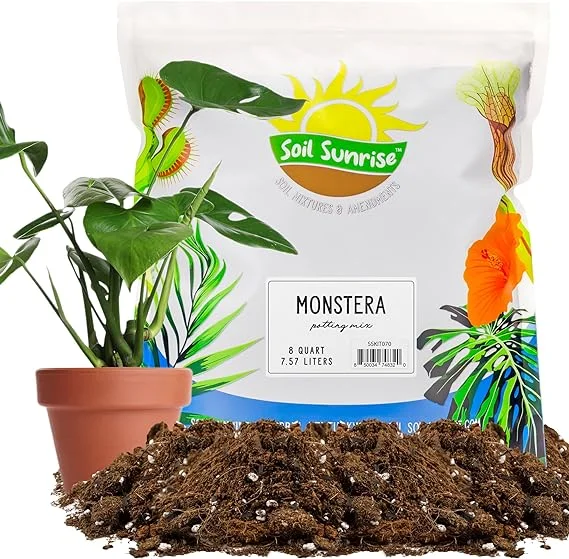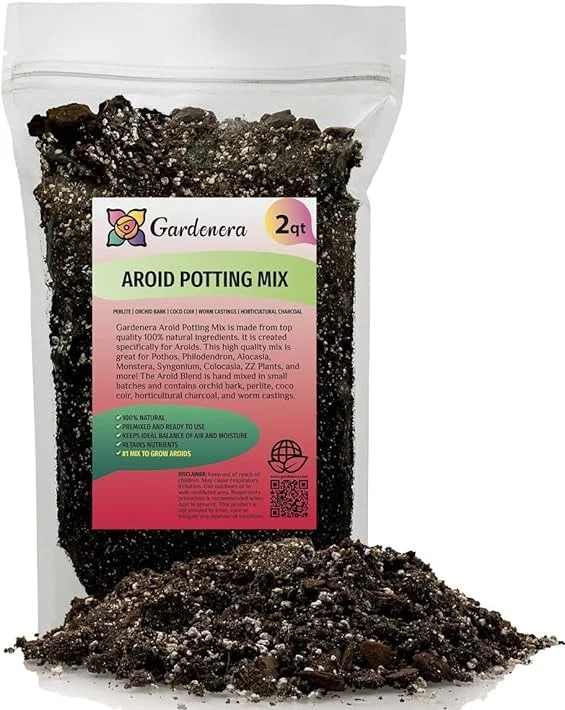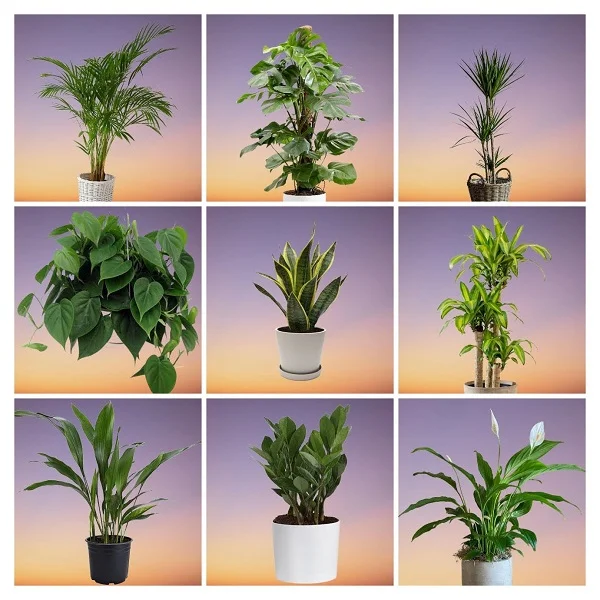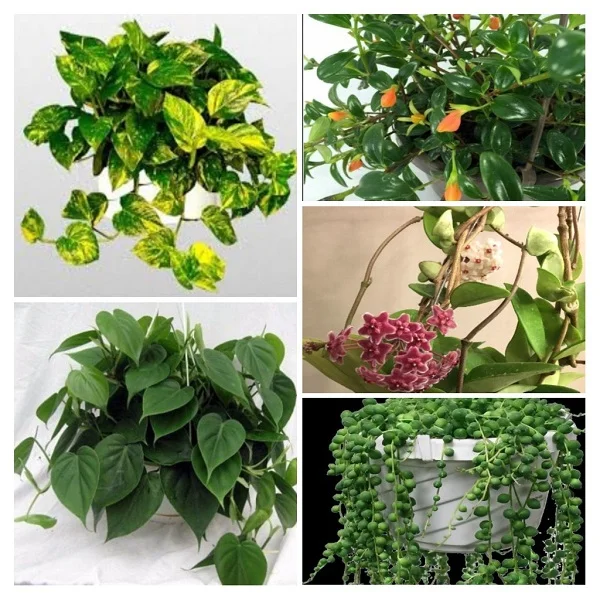Silver Monstera (Monstera siltepecana) Indoor Care, Propagation, Growing Problems
Some links in this post may be affiliate links
Silver Monstera (Monstera siltepecana) prospers in bright indirect, warm and humid conditions and moderately moist, rich, well-drained soil coupled with monthly feeding in the growing period.
Monstera siltepecana also called Siltene Monstera is one of the popular Monstera varieties which exhibits two different growth habits in its life stages.
In its juvenile stage, the long, oval-shaped leaves in Monstera siltepecana are bluish-gray with distinct dark-green veins. As it ages, the leaves become larger, dark-green and develop fenestrations (holes).
This unique Silver Monstera can be grown as a climber on a trellis or pole, in a hanging basket or in a terrarium. The leaves will remain in the juvenile stage if it is grown in a terrarium or in a hanging basket. If allowed to climb on a moss pole or trellis, it will begin to produce mature leaves.
The Monstera siltepecana is sometimes incorrectly labelled as Silver Queen Philodendron or Philodendron siltepecana. Monstera siltepecana is often mistaken for Epipremnum-pinnatum 'Cebu Blue' Pothos. The leaves in Monstera siltepecana are larger, variegated with distinct dark-green veins while those of Cebu Blue are smaller and have a glaucous and textured appearance.
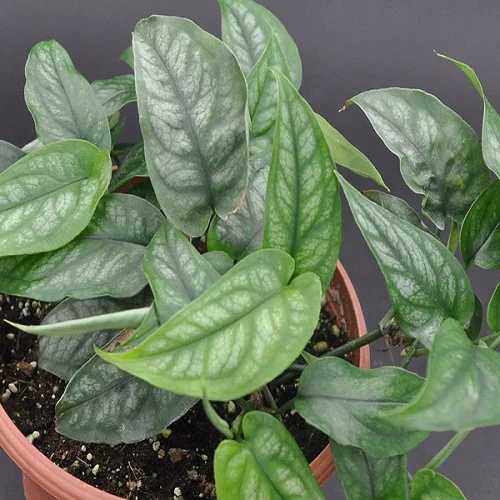
Botanical name: Monstera siltepecana
Family: Araceae
Common names: Silver Monstera, Siltene Monstera
Origin
Monstera siltepecana is an evergreen vine native to the tropical rainforests of Mexico and Central America where it is found growing as a hemiepiphyte.
Toxicity
Monstera siltepecana is mildly toxic to humans and toxic to pets. If ingested, it can cause pain and swelling in the mouth, tongue and lips, vomiting, excessive drooling and difficulty in swallowing.
Where to Buy
Are you looking to add this magnificent plant to your collection? Monstera siltepecana are available online on Etsy (Link to Etsy).
Monstera siltepecana Care Indoors
Silver Monstera (Monstera siltepecana) prospers in bright indirect light, average warmth of 18-270C, humidity of 50-55% and moderately moist, fertile, well-drained, Monstera potting soil coupled with monthly feeding during the growing season.
Monstera siltepecana requires regular pruning to keep it neat as well as discourage pest and disease infestation. Repotting is only needed when the plant becomes pot-bound. Keep reading for more on these growing conditions and how to achieve them.
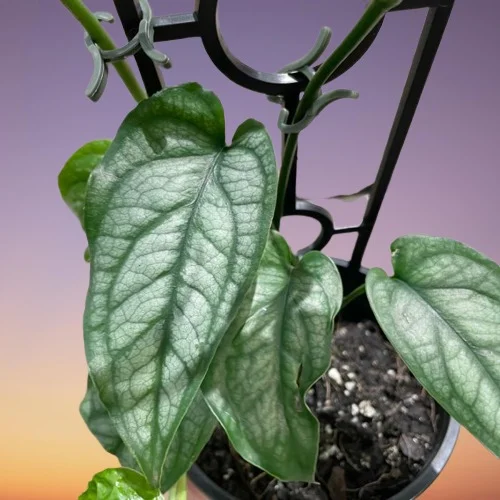
Light Requirements
Silver Monstera grows best in bright indirect light. Keep it away from direct sunlight as it can cause sunscorch on the leaves. Position the plant next to a sunless window or near a bright window.
Where the natural lighting is not adequate, you may use grow lights to supplement it. Take a look at these full spectrum grow lights on Amazon.
Rotate the pot regularly to ensure that the plant receives light on all sides for uniform growth and prevent legginess.
Watering
Water Silver Monstera liberally during the growing season and allow the top 2-3 inches of soil to dry out between waterings to keep the soil moderately moist.
Decrease watering during the cold season to keep the soil slightly moist but do not allow the soil to dry out completely.
Ensure the pot has a drainage hole to prevent the soil from getting soggy as it can lead to rotting and can result in the eventual death of the plant.
Temperature and Humidity
The best temperature for Silver Monstera is an average warmth of 18-270C. Keep it away from cold drafts to prevent sudden drop in temperature as they can result in stunted growth and leaf drop.
Moderate humidity of 50-55% is ideal for Silver Monstera. Where the air is too dry, set the pot on a wet pebble tray to elevate humidity. Check out these techniques on how to raise humidity for houseplants.
Every so often, clean the leaves by damp-wiping with a soft cloth to get rid of dust and also discourage pest infestation. Make sure that there is good air circulation to prevent fungal diseases.
Fertilizer
Feed Silver Monstera with a balanced, water-soluble fertilizer every 4 weeks during the growing period. Do not feed in the cold season as growth is minimal and feeding at this time may lead to fertilizer burn.
Potting Soil
The best soil for Monstera siltepecana should be rich in organic matter and well-drained to prevent it from getting soggy while providing the required nutrients. Potting mixes designed for Monsteras and those designed for aroids are ideal for this plant. Make your selection from our 10 Best Potting Soil Mix for Monsteras Grown Indoors.
Repotting
Repot Silver Monstera every 1-2 years during the growing season when it becomes pot-bound; when the roots grow through the drainage hole. Use a pot 1 size larger and ensure that the pot has a drainage hole to avoid getting soggy soil as it can lead to root-rot.
Monstera siltepecana is perfect in a hanging basket where the the stems can cascade downwards beautifully. Check out these hanging planters with macrame plant hangers on Amazon.
Pruning
Pruning Silver Monstera is easy. Remove yellow and dead leaves to maintain the plant neat as well as discourage pest and disease infestations.
Propagation
Silver Monstera (Monstera siltepecana) can be propagated at the beginning of the growing period by use of stem cuttings or by air layering. The stem cuttings can either be rooted in soil or in water.
Rooting Silver Monstera stem cuttings in soil
Take a stem cutting about 4-6 inches long from a healthy Silver Monstera by cutting at a point just below an aerial root. Just one leaf node with the leaf is enough to propagate a new plant.
Strip off the lower leaves and dip the lower cut end in a rooting hormone to hasten rooting.
Insert at least 3 inches of the cutting in moist, free-draining soil. Make sure that the rooting container has proper drainage to avoid getting soggy soil.
Place the set up in a well-lit, warm place and maintain the soil moist until new growth emerges.
Allow the new Silver Monstera to be well established before transplanting after which you can begin routine care.
Rooting Silver Monstera stem cuttings in water
Take a stem cutting about 4-6 inches long from a healthy Silver Monstera by cutting at a point just below an aerial root. Just one leaf node with the leaf is enough to propagate a new Silver Monstera.
Strip off the lower leaves and dip the lower cut end in a rooting hormone to hasten rooting.
Place the cutting in a jar containing plain water while ensuring that at least one leaf node is under water.
Position the set up in a well-lit spot and change the water every 5-7 days.
Once adequate roots have developed, plant the cutting in well-drained soil and place in a well-lit, warm place.
Allow the new Monstera siltepecana to be well established before transplanting after which you can begin routine care.
How to propagate Silver Monstera by air layering
There are two methods of air layering Silver Monstera.
1. One method consists of notching the stem of a healthy Silver Monstera and coating the notch with a rooting hormone.
Surround the notched area with damp moss and then cover it with a polythene film or clear plastic wrap.
After the roots have formed sever the stem just below the covered part.
Remove the polythene and carefully pot the rooted cutting in moist, free-draining soil.
Place in a warm, well-lit place and maintain the soil moist until the new Monstera siltepecana is well established after which you can begin routine care.
2. The second method involves coating the stem of your Silver Monstera at a node with a rooting hormone. Surround the node with damp moss and then cover it with a polythene film or clear plastic wrap.
After the roots have formed sever the stem just below the covered part.
Remove the polythene and carefully pot the rooted cutting in moist free-draining soil.
Place in a warm, well-lit place and maintain the soil moist until the new Monstera siltepecana is well established after which you can begin routine care.
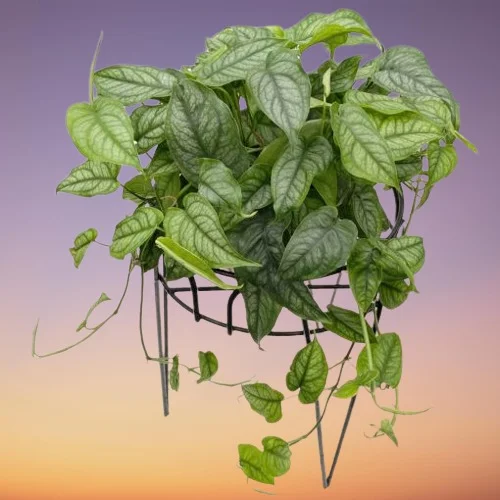
Monstera siltepecana Problems with Solutions
Silver Monstera (Monstera siltepecana) problems include leaf drop, yellow leaves, leggy growth, brown leaf tips, rotting, weeping at edges, pests and diseases among others. Keep reading for more on these problems, their remedies and solutions.
Diseases
Silver Monstera is prone to leaf spot which is brought about by overwet conditions coupled with poor air circulation. Isolate the affected plant to prevent spread to other plants and treat it with a fungicidal solution as indicated on the label. Make sure that there is good air circulation for the plant and stop wetting the foliage.
Pests
Common pests in Silver Monstera are mealy bugs, scales, aphids and spider mites. Isolate the affected plant to prevent spread to other plants and treat with neem oil or insecticidal soap as instructed by the manufacturer.
Brown papery leaf tips and edges
One possible cause of leaves with brown papery tips and edges in Silver Monstera is dry air (low humidity). Set the pot on a wet pebble tray or use a cool mist humidifier to raise humidity.
The second possible cause of leaves with brown papery leaf tips and edges in Silver Monstera is that the plant may be root-bound. Repot the plant into a pot 1 size larger and one that has a drainage hole to prevent the soil from becoming soggy as it can lead to root-rot disease.
Leggy growth and small pale leaves
Too little light is the cause of leggy growth with small pale leaves as Silver Monstera will not thrive in deep shade. Move the plant to a more brighter spot where it will receive bright light or instal grow lights where natural lighting is insufficient. Check out this guide on understanding light for houseplants.
Yellowing leaves
There are four possible causes of yellowing leaves in Silver Monstera. One possible cause is overwatering if many leaves are affected and there are signs of wilting and rotting.
Water Monstera siltepecana liberally during the growing season and allow the top 2-3 inches of soil to dry out between waterings. Reduce watering in the cold period to keep the soil slightly moist as growth is minimal at this time so the plant does not require a lot of water. Learn more on how to water houseplants the right way.
The second possible cause of Silver Monstera yellowing leaves is underfeeding if there is no wilting and rotting. Feed the plant with a balanced, water-soluble fertilizer every 4 weeks during the growing period. Learn how to feed houseplants.
The third possible cause of Silver Monstera yellowing leaves is underwatering if only lower leaves are affected and have dark spots and new leaves are dark and small.
Water the plant liberally during the growing season and allow the top 2-3 inches of soil to dry out between waterings to keep the soil moderately moist. Lessen watering in the cold season and keep the soil slightly moist but never allow the soil to dry out completely.
The fourth possible cause of Silver Monstera yellowing leaves is exposure to direct sunlight if leaves are pale colored and have straw-colored patches. Protect the plant from hot direct sunshine.
Losing (dropping) leaves
As the lower leaves of your Silver Monstera age, they fall but if there is an abnormal loss of leaves the reason is sudden change of growing conditions. Gradually acclimatize it to the new growing conditions before moving it to a new position.
If the Silver Monstera leaves turn brown and dry before they fall then high temperature is the cause. Ensure the plant is receiving an average warmth of 18-270C.
Rotting stems
Rotting stems in Silver Monstera is an indication of fungal stem-rot disease which is promoted by high moisture and too little warmth. You can save the plant by repotting and keeping the soil dry and warm for a period of time.
Weeping at the leaf edges
If the soil is too wet, Silver Monstera will respond with leaves weeping at the edges. Allow the top 2-3 inches of soil to dry out between waterings and reduce frequency of watering.
You liked it? Share on social media.
Related Content
Amazon Associates Disclosure
Homeplantsguide.com is a participant in the Amazon Services LLC Associates Program, an affiliate advertising program designed to provide a means for sites to earn advertising fees by advertising and linking to amazon.com.

